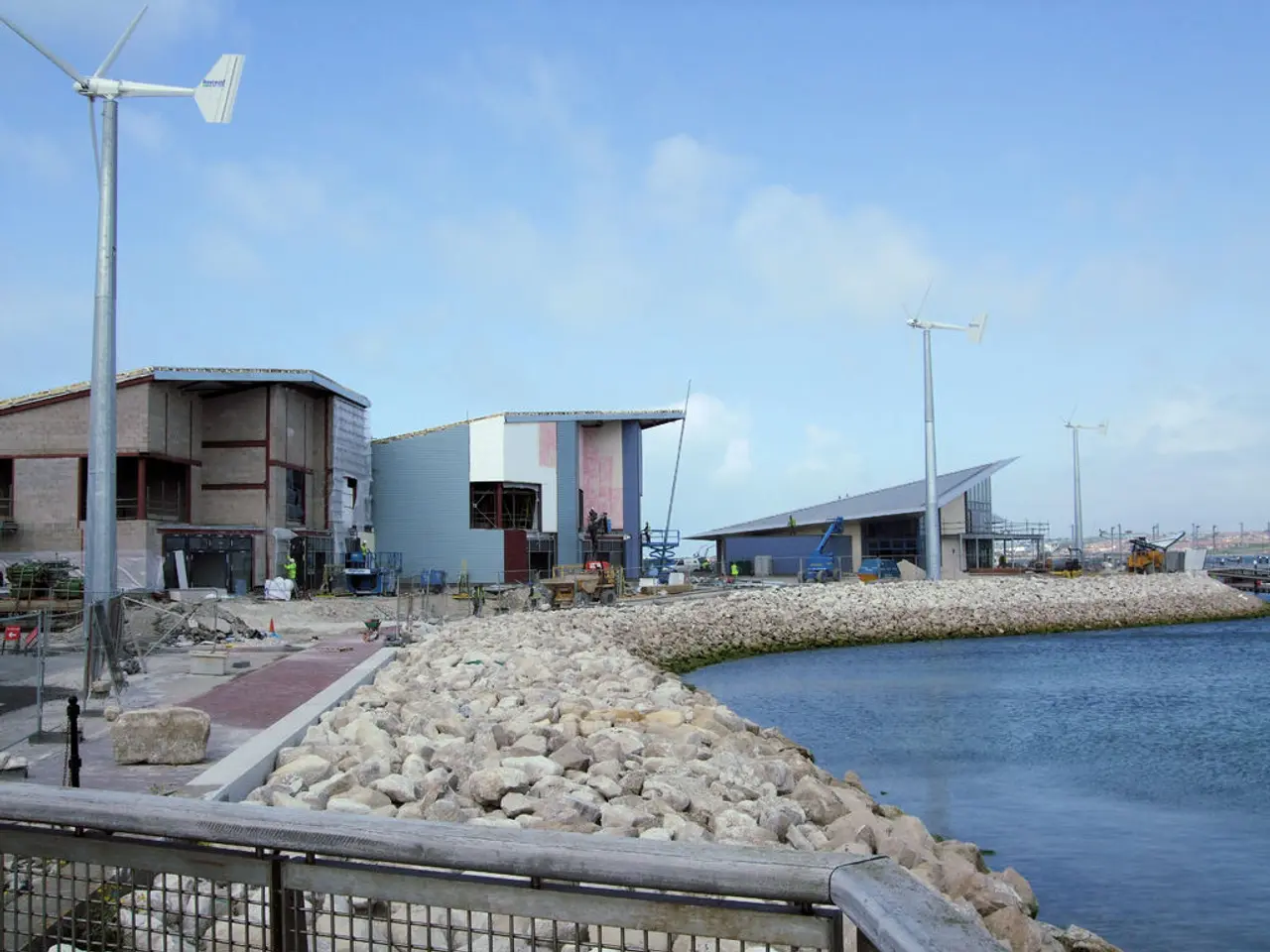Offshore wind energy development expands in Hokkaido, Japan, with designated areas now available for auction
Japan has designated two offshore wind auction zones off the southern coast of Hokkaido—Matsumae and Hiyama—as promotion areas to boost its offshore wind power sector. These zones are part of the government's plan to hold public auctions selecting operators for energy projects, though specific auction dates have not yet been announced [1][2][4].
The government aims to develop guidelines for using these zones and intends to significantly increase offshore wind capacity to 45 gigawatts (GW) by 2040. This ambitious target supports Japan's goals to reduce dependence on fossil fuels, cut CO2 emissions, and enhance national energy security [1][2][4].
Key points include:
- Designated areas: Matsumae and Hiyama, off Hokkaido’s southern coast.
- Timeline: No firm auction dates have been announced yet; progress has faced delays with cost escalations impacting earlier projects.
- Goals: Reach 45 GW of offshore wind power capacity by 2040, including floating offshore wind farms.
- Context: Japan has also passed legislation enabling offshore wind projects in its exclusive economic zone and is planning to sweeten terms for developers because rising costs have stalled progress [1][2][3][4].
The designated areas for offshore wind auctions were initially identified as promising zones in May 2023. Following formal discussions, consensus was reached for Matsumae in July 2023 and for Hiyama in March 2025 [1][2][4]. A final public inspection period was conducted from 25 June to 9 July for the designated areas, during which no objections were raised, leading to the formal designation [1][2][4].
Japan aims to have 10 GW of offshore wind capacity by 2030 and 30-45 GW by 2040, including floating wind, as part of its target to reach net-zero emissions by 2050 [1][2][4]. The Ministry of Economy, Trade and Industry (METI) and the Ministry of Land, Infrastructure, Transport, and Tourism (MLIT) are responsible for the designation and management of these promotion zones [1][2][4].
The opening of the Exclusive Economic Zone for offshore wind projects is a part of Japan's goal to reach net-zero emissions by 2050. Recently, the Japanese government passed a bill that enables offshore wind projects to be built in the country's Exclusive Economic Zone (EEZ), beyond the 22-kilometre line of Japan's territorial waters [1][2][3][4].
Sources:
[1] offshoreWIND.biz [2] Reuters [3] The Japan Times [4] Nikkei Asia
- The designated offshore wind auction zones, Matsumae and Hiyama, were initially identified in May 2023, with the formal discussions leading to their designation in July 2023 and March 2025, respectively.
- The Ministry of Economy, Trade and Industry (METI) and the Ministry of Land, Infrastructure, Transport, and Tourism (MLIT) are responsible for the designation and management of these promotion zones, which are part of Japan's plan to boost its offshore wind power sector.
- Japan aims to have 10 GW of offshore wind capacity by 2030 and increase it to 30-45 GW by 2040, including floating wind, as part of its target to reach net-zero emissions by 2050 and contribute to the reduction of dependence on fossil fuels and CO2 emissions.
- The opening of the Exclusive Economic Zone for offshore wind projects is a strategic move by Japan to achieve its goal of reaching net-zero emissions by 2050, as passing legislation enables these projects to be built beyond the 22-kilometre line of Japan's territorial waters.




